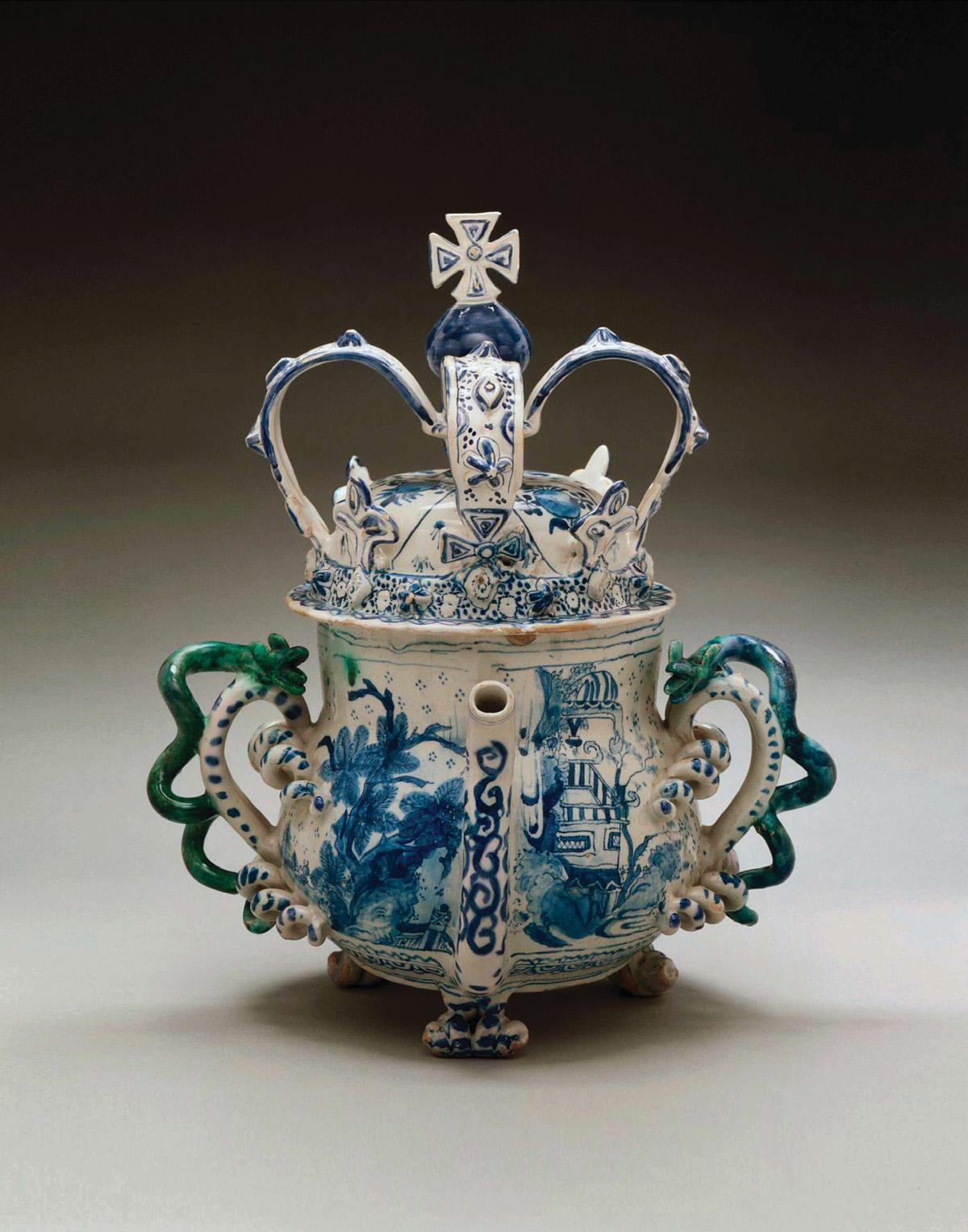
Inspired by Dutch tin-glazed earthenware first made in the town of Delft in Holland, English delftware first emerged in the 1620s in London workshops such as the gloriously named Pickleherring Pottery and was manufactured in Liverpool and Bristol potteries, too. 'Delftware first became of interest when William and Mary came to the throne in 1689 and brought a certain amount of Dutch pottery over with them,' says Garry Atkins, antiques dealer and pottery expert. 'People copied what the king and queen liked. Delftware doesn't have quite the same appeal as porcelain, which was grander stuff, but I just love it. It's very simple and so appealing - not over-elaborate.
The Dutch copied Chinese porcelain patterns, but the English potters did their own thing.' Up until this point, most people in England were using pewter or wooden plates. The very wealthy used silver, of course, but English delftware was embraced by the middle classes,' explains John Howard, antique English pottery specialist. The unique appeal of English delftware is difficult to pin-point, though many agree it has a fluid, free style whereas Dutch Delftware tends to be a bit more formal. 'English delftware has a strong country naivety to it that the Dutch pieces lack,' explains John.
The new manufacturing technique gave a white, smooth surface to buff-coloured earthenware clay, but it was tricky to fire. English delftware was never cheap, because less than half of the pieces that were fired could be sold at full price,' reveals John. Fragility was another issue - the actual body was strong, but the glaze was liable to chip and craze, so it wasn't suitable for serving very hot liquids. The pattern was hand-painted in a limited colour palette of mineral pigments that were high-fired: blue, yellow, orange, purple, green and red. 'Both Dutch and English potters used oxide colours, but there are subtle differences,' says John. For example, the cobalt isn't quite as hard in English pieces.'
This story is from the Special 2022 edition of Homes & Antiques.
Start your 7-day Magzter GOLD free trial to access thousands of curated premium stories, and 9,000+ magazines and newspapers.
Already a subscriber ? Sign In
This story is from the Special 2022 edition of Homes & Antiques.
Start your 7-day Magzter GOLD free trial to access thousands of curated premium stories, and 9,000+ magazines and newspapers.
Already a subscriber? Sign In

Relaxed LIVING
John and Katy Maskell Bell have filled their Victorian home with inherited treasures and antique finds to create a stylish yet warm and welcoming interior.

The HARD SELL
Like many of us post Christmas, Hattie Bell felt in need of a good clear out, but wasn't sure where to turn for items that were too special for the charity shop. Here, she tries and tests several methods - from selling ceramics at a vintage market to auctioning books...

THE ANTIQUES THAT SHAPED ME - Matt Dixon
The owner of TallBoy Interiors tells us about selling his first antique, and how to handle the pressure at French fairs.

48 hours in ASOLO
The medieval hilltop town of Asolo has captivated the imagination of visitors for centuries. Amanda Robinson finds out more about this beautiful- and romantic - Venetian gem...

Pride of place - STAFFORDSHIRE SLIPWARE
Distinguished by its bold, earthy colours and the use of liquid clay applied in decorative patterns, this rustic English pottery has a long and fascinating history, finds Janet Gleeson

ONE EYE ON THE PAST
Artist Sophie Glover explains how she creates her contemporary lover's eyes

Rainbow revelations
When Amy Eld bought her Pimlico home, its plain white walls sparked a desire to drench it in colour, before carefully furnishing it with vintage and antique treasures

Sustainable STYLE
When Nichola and Adam Burns moved from Bristol to France, they took their love of vintage and antique pieces with them, decorating their home with a multitude of stylish finds

Curated collections
Step into Marc Kitchen-Smith's atmospheric Cornish home, where antiques, history and passion intertwine to create a timeless, well-curated sanctuary.

Lisa Coppin
The Cotswold Company’s chief creative officer shares the pieces that mean so much to her